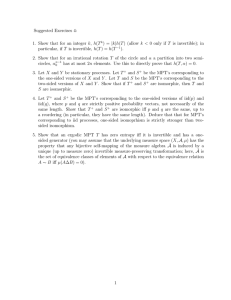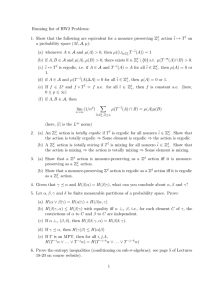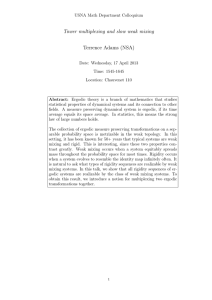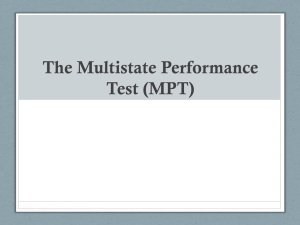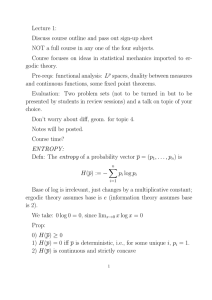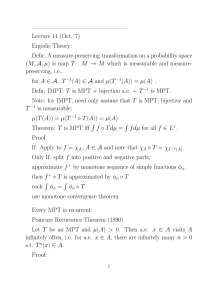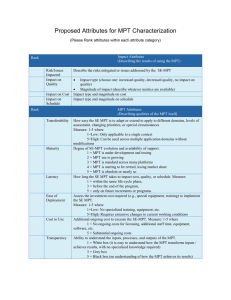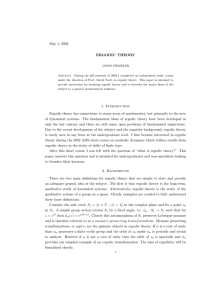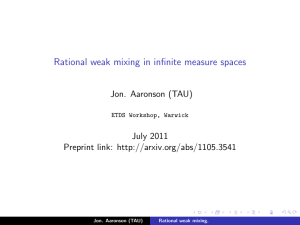Running list of ergodic theory exercises :
advertisement
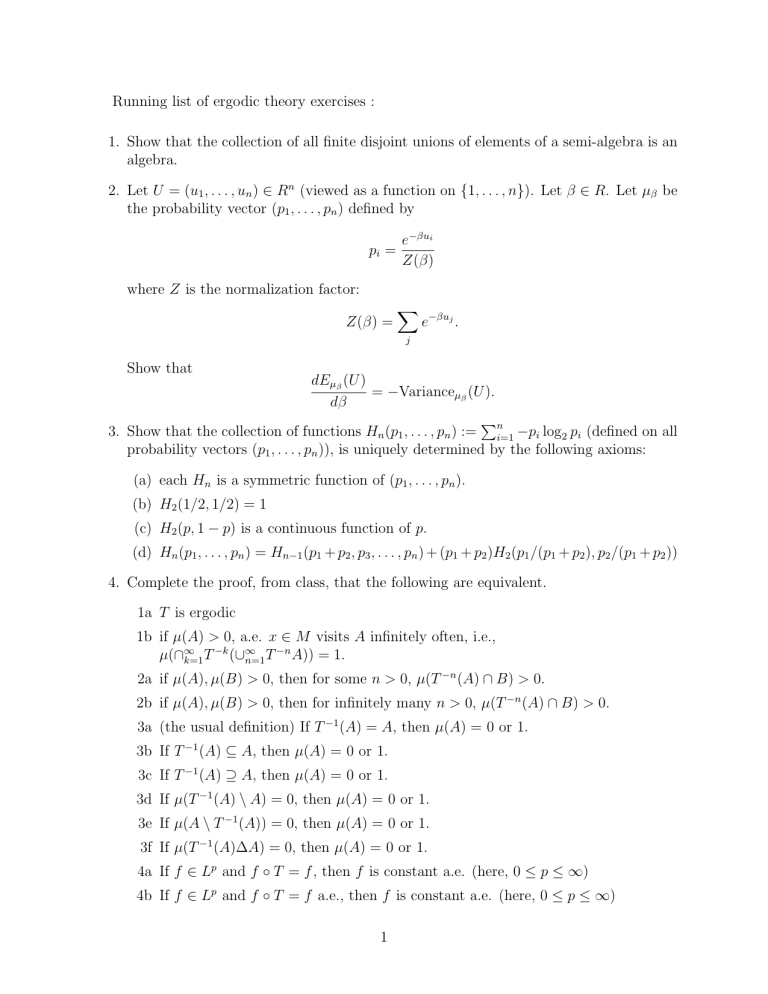
Running list of ergodic theory exercises :
1. Show that the collection of all finite disjoint unions of elements of a semi-algebra is an
algebra.
2. Let U = (u1 , . . . , un ) ∈ Rn (viewed as a function on {1, . . . , n}). Let β ∈ R. Let µβ be
the probability vector (p1 , . . . , pn ) defined by
pi =
e−βui
Z(β)
where Z is the normalization factor:
Z(β) =
X
e−βuj .
j
Show that
dEµβ (U )
= −Varianceµβ (U ).
dβ
P
3. Show that the collection of functions Hn (p1 , . . . , pn ) := ni=1 −pi log2 pi (defined on all
probability vectors (p1 , . . . , pn )), is uniquely determined by the following axioms:
(a) each Hn is a symmetric function of (p1 , . . . , pn ).
(b) H2 (1/2, 1/2) = 1
(c) H2 (p, 1 − p) is a continuous function of p.
(d) Hn (p1 , . . . , pn ) = Hn−1 (p1 + p2 , p3 , . . . , pn ) + (p1 + p2 )H2 (p1 /(p1 + p2 ), p2 /(p1 + p2 ))
4. Complete the proof, from class, that the following are equivalent.
1a T is ergodic
1b if µ(A) > 0, a.e. x ∈ M visits A infinitely often, i.e.,
−k
−n
µ(∩∞
(∪∞
A)) = 1.
n=1 T
k=1 T
2a if µ(A), µ(B) > 0, then for some n > 0, µ(T −n (A) ∩ B) > 0.
2b if µ(A), µ(B) > 0, then for infinitely many n > 0, µ(T −n (A) ∩ B) > 0.
3a (the usual definition) If T −1 (A) = A, then µ(A) = 0 or 1.
3b If T −1 (A) ⊆ A, then µ(A) = 0 or 1.
3c If T −1 (A) ⊇ A, then µ(A) = 0 or 1.
3d If µ(T −1 (A) \ A) = 0, then µ(A) = 0 or 1.
3e If µ(A \ T −1 (A)) = 0, then µ(A) = 0 or 1.
3f If µ(T −1 (A)∆A) = 0, then µ(A) = 0 or 1.
4a If f ∈ Lp and f ◦ T = f , then f is constant a.e. (here, 0 ≤ p ≤ ∞)
4b If f ∈ Lp and f ◦ T = f a.e., then f is constant a.e. (here, 0 ≤ p ≤ ∞)
1
5. Let T be an MPT and I denote the collection of measurable sets that are invariant
mod measure zero, i.e., µ(A∆T −1 (A)) = 0. Show that I is a σ-algebra.
6. Let X and Y be stationary processes. Let T + and S + be the MPT’s corresponding to
the one-sided versions of X and Y . Let T and S be the MPT’s corresponding to the
two-sided versions of X and Y . Show that if T + and S + are isomorphic, then T and
S are isomorphic.
7. Let T + and S + be the MPT’s corresponding to the one-sided versions of iid(p) and
iid(q), where p and q are strictly positive probability vectors, not necessarily of the
same length. Show that T + and S + are isomorphic iff p and q are the same, up to a
reordering (in particular, they have the same length).
8. Suppose that P is a stochastic matrix and π is a strictly positive probability vector π
s.t. πP = π. Define the relation on the vertices of the graph G(P ) by i ∼ j if there is
a path from i to j. Show that this relation is an equivalence relation (the equivalence
classes of this relation are called irreducible components).
9. Consider the MPT defined by a one-sided stationary Markov chain, given by P and π
as above. Let Ai = {x ∈ F Z+ : x0 = i}. Give an interpretation to the limiting function
χ∗Ai (from the ergodic theorem) in terms of the irreducible components of P .
10. Show that mixing is an isomorphism invariant and more generally that if there is a
measure preserving homomorphism from T onto S and T is mixing, then so is S. Find
an example of MPT’s T and S and a measure preserving homomorphism from T onto
S such that S is mixing but T is not mixing.
11. Let T be an invertible MPT. Show that T is ergodic (resp., mixing) iff T −1 is ergodic
(resp., mixing).
12. Let T be an MPT and B a semi-algebra which generates the underlying σ-algebra.
Show that if
µ(T −n (A) ∩ B) → µ(A)µ(B).
for all A, B ∈ B, then T is mixing.
13. Complete the proof that a stochastic matrix is primitive iff it is irreducible and aperiodic.
14. Complete the geometric proof (using convexity ideas, given in class) that if P is a
primitive stochastic matrix with stationary vector π, then for all i, j
(P n )ij → πj
2
